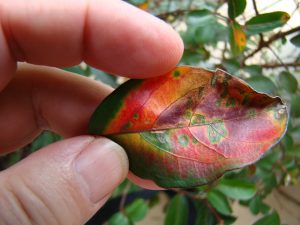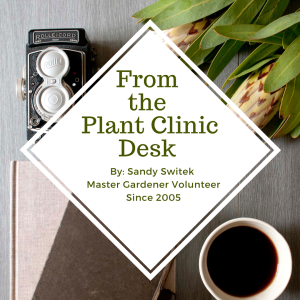Everyone has the same goal for the yard.
We all want our place to look good, whether we take care of it ourselves or hire various companies to do it.
Either way, here are some ideas on how to have a nice yard with fewer problems.
Choose the right plant for the spot available.
- The site must have the correct amount of sun or shade.
- It also needs to be determined whether the spot is too wet or too dry to support the new plant.
- Good air circulation also helps.
Find out how large a tree or shrub will get before planting it.
- Most trees will grow tall enough to get into power lines if planted too close to them.
- Other times there just isn’t enough space for the tree or shrub to reach its mature size, without excessive pruning.
- Also, look down at the space available for the roots to spread out and support the plant during storms.
- Avoid locations too near sidewalks and driveways if the plant will become large.
Plant your new specimens correctly.
- First, call 811 before you dig, to make sure that you won’t be cutting underground wires or pipes.
- Then make sure that the holes are at least two and a half feet from the house.
- Check for circling roots and free them up before placing the root ball in the hole.
- The hole should be an inch or two shallower than the root ball, but about one to three times wider.
- Resist the urge to feed the plant for a few weeks while the roots establish themselves.
Provide adequate water without overdoing it.
- Drought tolerant plants can reduce water usage.

Setting the sprinkler head for an irrigation system. UF/IFAS Photo: Josh Wickham - New plants may need some extra hand watering until established.
- On the other hand, don’t turn your lawn into a swampy area with too much water.
- St. Augustine grass needs 1/2 to 3/4″ per week during dry periods.
Mulch correctly.
- While too little mulch may not help much, too much mulch can result in root problems.
- Two to three inches is enough.
- Mulch placed against tree trunks can result in damage.
- Mulch placed against the house can encourage subterranean termites, due to moist conditions.
- Just keep the mulch 6-12 inches away from trees and houses.
- Another common mistake concerns the type of mulch. While cypress is a decent mulch, it is not always sustainably grown, but taken from the forests. Trees are destroyed just for mulch. For this reason, it is not recommended to use it. Other options are available, such as shredded pine bark fines, hardwood bark, pine straw, and melaleuca mulch.
- Melaleuca mulch is a product produced from invasive trees, and others are by-products of paper and wood industries.
Pruning should be done to remove dead or diseased wood and to keep sidewalks and driveways clear.
- Hand pruners do a better job than weed eaters and hedge trimmers on shrubs.
- This will produce a healthier and more natural-looking plant.
- Tree branches should be removed outside of the branch collar, not in line with the trunk.
What are the worst pruning practices?
Tree topping is the ultimate worst practice. Besides being unattractive, it is not healthy for the tree, and will not result in a stronger tree structure. Instead, a certified arborist should thin out branches in trees which are vulnerable to storm damage. As for shrubby trees, crape myrtle murder (topping) is also unattractive for half of the year, while decreasing the vigor of the plant. In this case, thinning of branches is also the recommended method of pruning. And just because you see professional workers hacking down crape myrtles, it doesn’t mean that it’s a good idea. Unknown to most people, crape myrtles are even available in various dwarf sizes which won’t get so large.
Lawns
Irrigate at the first sign of wilting. However, daily light watering is only good during the establishment period for a new lawn. Otherwise, it can result in shallow roots which cannot tolerate drought. Scalping and mowing too low can also cause the same problem. Mow St. Augustine grass at 3.5 to 4 inches. During a drought, mow less often, and mow a little higher. Dwarf grasses, such as Seville, may tolerate 2.5 to 3 inches. Weed and feed is not the best thing either. It can adversely affect trees and shrubs with roots underneath the lawn. It can also damage the lawn during hot conditions. Preferably, use a slow-release fertilizer, and spot treat weeds with a liquid weed control product labeled for your lawn type. Treat St. Augustine grass for chinch bugs during the hot season only, which is usually May through September. Otherwise, the bugs will be underground in dormancy and will not be affected by anything you do. Do not feed your new sod for a month or two, while it establishes its roots.
To green up a lawn, it is not necessary to provide extra fertilizer. An application of iron sulfate or chelated iron can do the same thing without causing the excessive growth which results in extra mowing. This is especially useful during summer when fertilization is not allowed.
Pesticide use
Picture this attempt to kill every bug in a small yard. The lawn, all plants, and the outside of the house have been sprayed with an estimated 100 gallons of pesticide. Is this a good idea? Actually, it is not. The beneficial bugs, along with butterflies and other pollinators, will perish. This is not even the recommended way to kill fleas or ants.
Here are the guidelines.
First, the pest must be identified, so that the best treatment can be found. Next, try natural methods. If still necessary, use a targeted pesticide. Treat only affected areas. Just because the label says it can be used on the house and on every plant that you have, it doesn’t mean that it’s a good idea. The pesticide is wasted on plants that don’t require

them, and on some delicate shrubs which can wilt from the treatment. Using a granular bait around the landscape and lawn is the better way of dealing with ants in the yard. Mounds can be baited individually. The visible ants not only eat this bait, but also carry some back to the nest, where the queen is. Even if your goal is to kill fleas, spraying the entire yard is not recommended. In this case, using insect growth regulators or a similar product should be done only in dry shaded areas where the pets stay.
Enjoying your yard!
Take time to enjoy the fruits of your labor. A beautiful healthy yard creates a nice peaceful haven for you to forget the worries of the world.

Need more information:
For more information about Florida Friendly Plants and Wildlife you can email me at epabon5@ufl.edu or like us to learn about new classes or events at Gardening in Central Florida
By: Sandy Switek since 2005 and Eva Maria Pabon Residential Horticulture Agent
Do you want to read more about gardening? Follow our blog Eva Pabon, Author at UF/IFAS Extension Osceola County (ufl.edu)
 1
1


